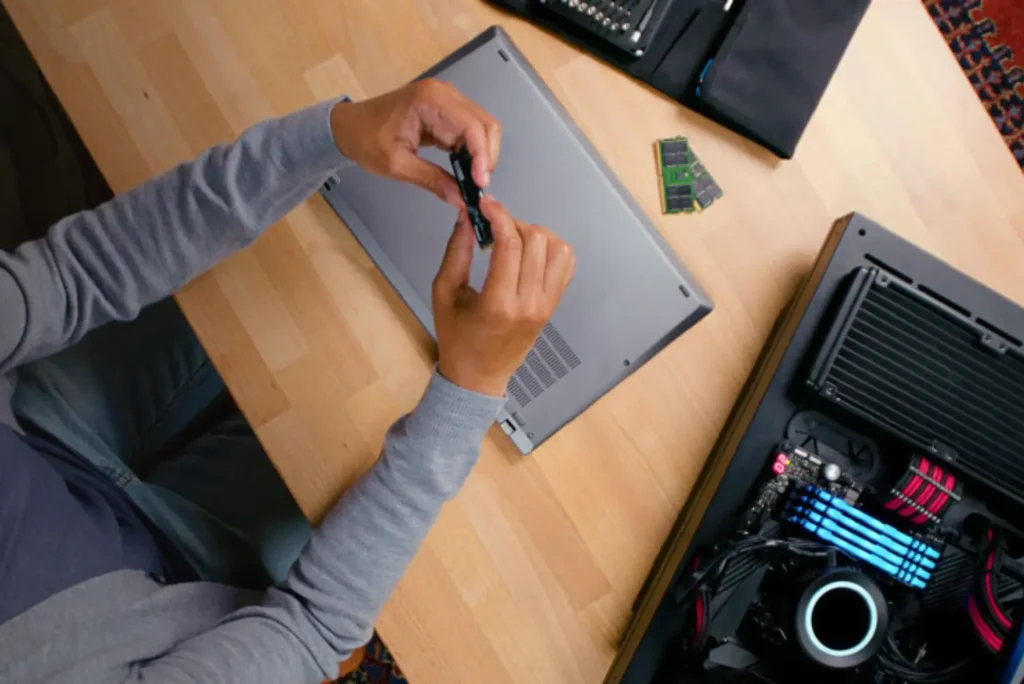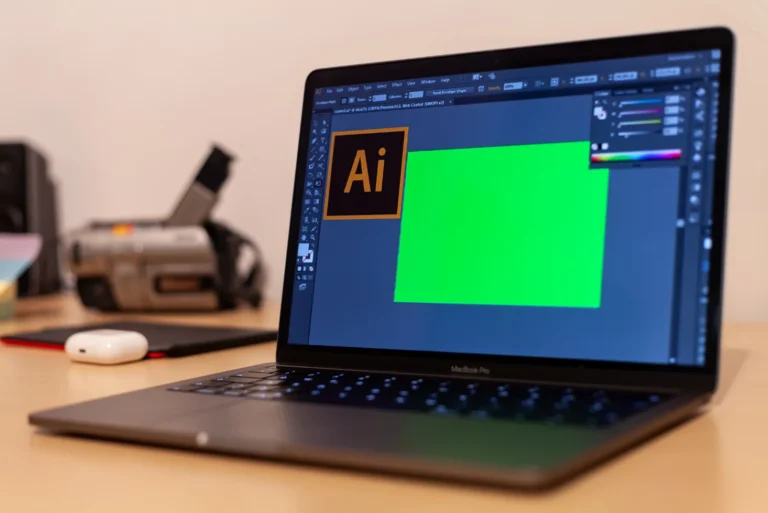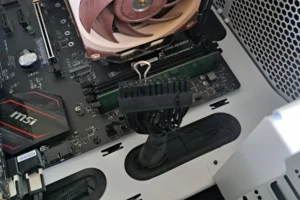Thermal paste is a viscous substance applied to a heat-generating surface such as a processor or graphics card.
It transfers heat between an electronic component and the heat sink that cools it. It fills the microcavities (small holes) between the two surfaces in contact, eliminating any air pockets that might hinder heat extraction.

Correct application of thermal paste optimizes thermal conductivity between the electronic component and the heat sink, enabling the computer to operate at lower temperatures and achieve better performance.
What is thermal conductivity?
Thermal conductivity is a measure of a material’s ability to conduct heat. In other words, it’s the ability of a material to transfer heat through itself. The more thermally conductive a material is, the more heat it can transfer from one point to another.
Thermal conductivity is a physical property specific to each material and can vary considerably from one material to another. For example, metals such as copper and aluminum are known to have high thermal conductivity, making them excellent for use as heat sinks in computers.
| Material | Thermal conductivity (W/mK) |
|---|---|
| Diamond | 1000-2600 |
| Gold | 310 |
| Silver | 429 |
| Ceramic / Carbon | Variable, generally low |
And what about heat sinks?
Heat sinks are cooling systems for electronic devices such as computers, smartphones and games consoles, to name but a few.
Their main role is to transfer the heat generated by electronic components to the ambient air, in order to maintain safe, optimum operating temperatures.

Heat sinks are generally made from materials with high thermal conductivity, such as aluminum or copper, to facilitate heat transfer. Their design often includes fins to increase the dissipation surface, as well as a flat base in contact with the electronic component.











Be the first to start the discussion!